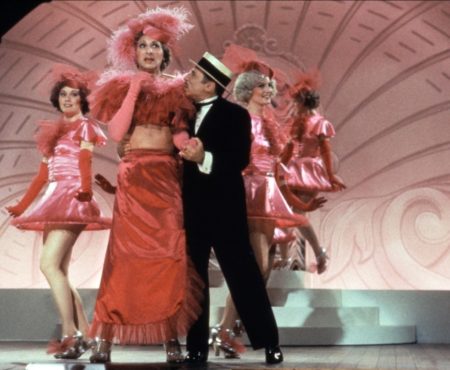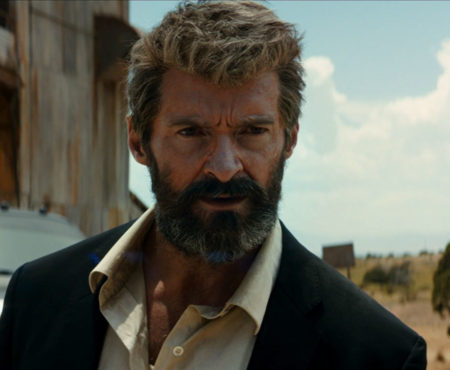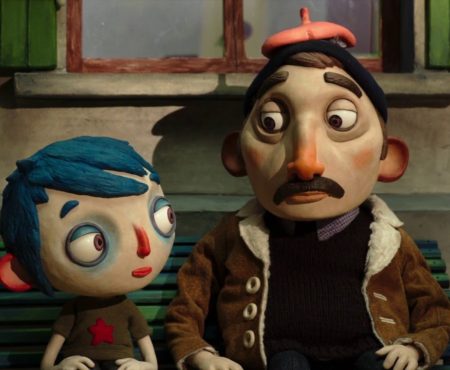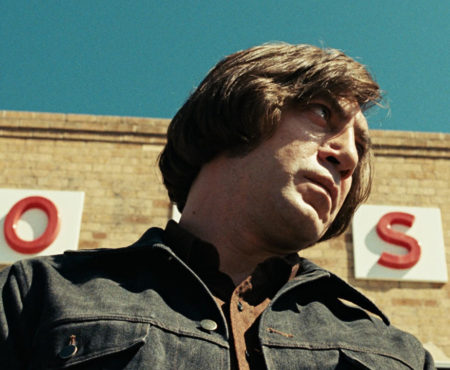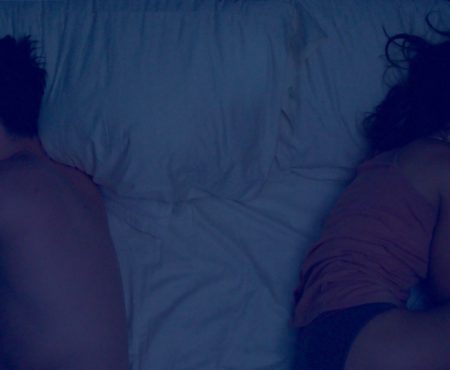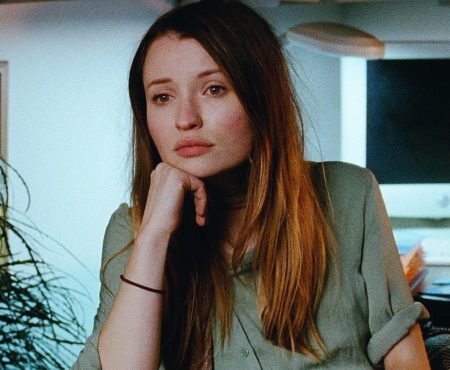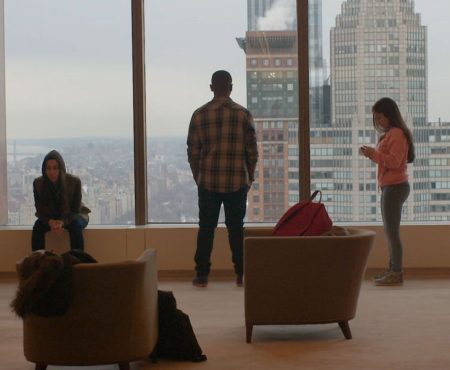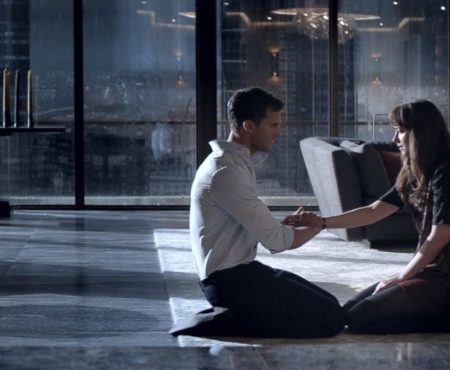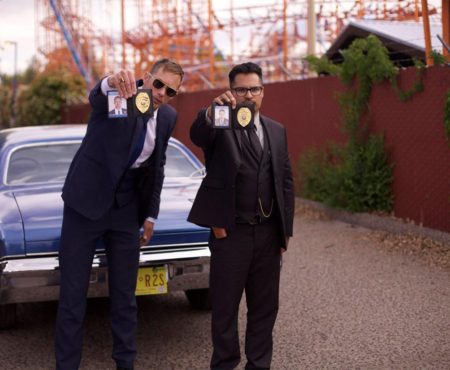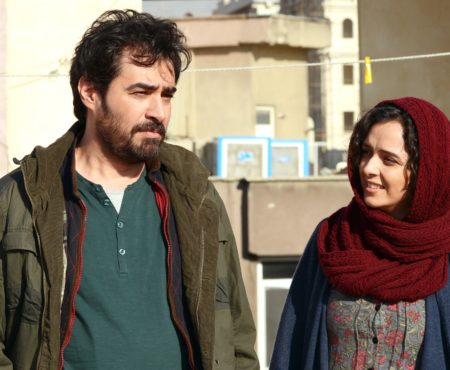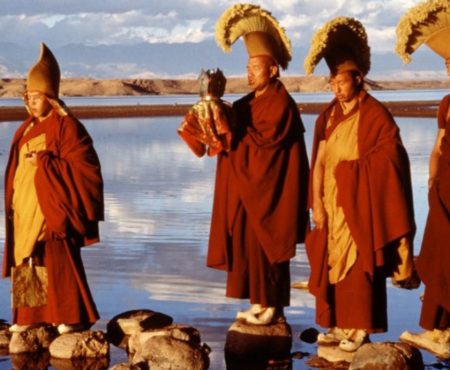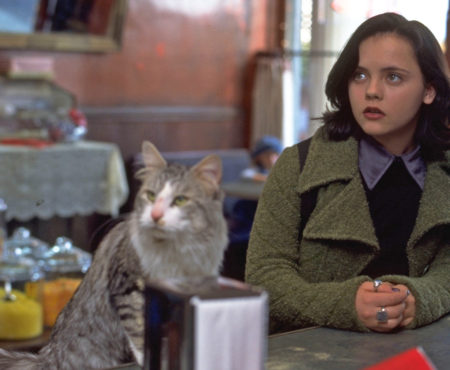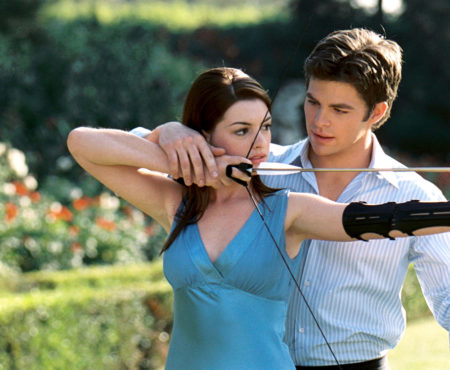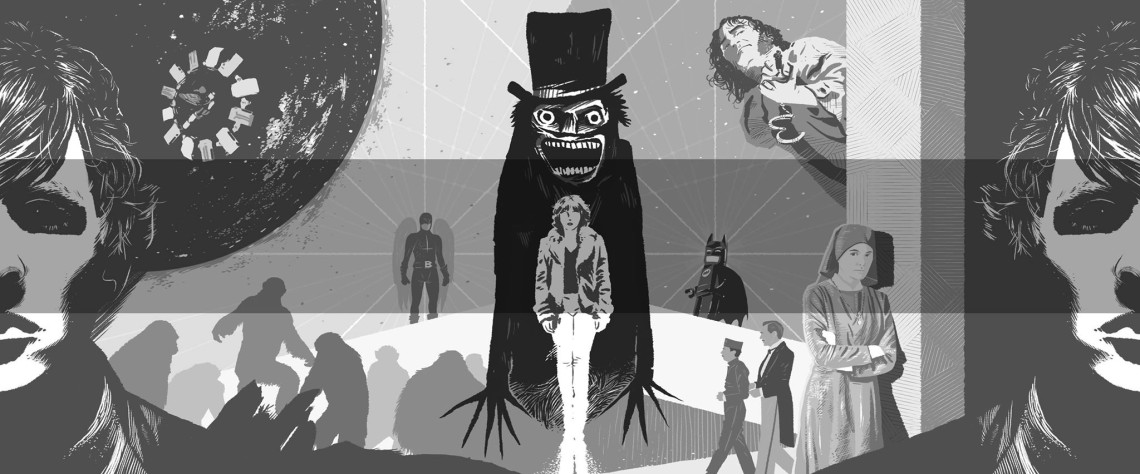2014 was a rollicking year for film, filled with most violent years, strange little cats, a never-dying Tom Cruise, missing women, arrogant literary geniuses and vampire rock-stars, among other things. While the industry for think pieces about the end of cinema and the end of filmmaking-as-we-know-it-now continues to boom in our digital era, and while some of these pieces have become refined enough to make some valid claims about the tumultuous industry and art form we call cinema, it’s simultaneously true that taking a look back at the year can produce a sense
of awe. Such an assessment makes you realize that good films continue to be made. 2014, the middle child of the 2010s, was full of some great examples, as this list will attest. This kind of seasonal reminder is necessary to appreciate the aesthetic abundance we cinephiles have. Despite the ridiculous logistical and financial hurdles that accompany filmmaking, it’s astonishing and comforting to know that our beloved art form continues to thrive. — Tina Hassannia
Appropriately rough around the edges and bristling with suffocating authenticity, David Mackenzie’s prison melodrama Starred Up is a vicious, raw, and unforgettable look at the penal system through the eyes of the overly violent 19-year-old offender Eric Love (Jack O’Connell). A true up-and-comer, O’Connell’s magnetic performance as the primal and fierce Eric is the sturdy bark of a film that transcends its “prison is hell” framework. Mackenzie’s film deserves attention because of its quick and crucial delivery of slang, accents, and shifting alliances within the walls of its brutal setting. Beyond these
kitchen-sink details, Starred Up surprises most in its sensitivity to relationships—mostly notably, the one between Eric and his inmate father (Ben Mendelsohn)—with both characters embodying some form of tough love towards one another, while at the same time trying each day to survive. Mackenzie’s handling of forgiveness and rehabilitation is affecting given the film’s wide gamut of arresting lead and supporting performances. It’s an unsettling world, but Mackenzie’s deft handling of drama is nothing short of revelatory. — Ty Landis
No comedy in 2014, and perhaps the past decade, wielded a higher joke per capita than They Came Together, an unabashed yet affectionate spoof of middling, saccharine rom-coms, from the smart-stupid (“You can say that again”) braintrust behind 2001’s equally hilarious Wet Hot American Summer. With a few features since then, director/co-writer David Wain has evolved into a more confident filmmaker while still operating on a shoestring budget, despite boasting a cast of just about every in-demand funny person of the moment, including
Amy Poehler, Paul Rudd, Christopher Meloni, Ed Helms, Ellie Kemper, Jason Mantzoukas, Bill Hader, and scene-stealer Max Greenfield. They Came Together pokes fun at tropes rather than directly referencing movies, putting it more on par with Airplane! and the Naked Gun series than with the lazy, mercilessly unfunny output of, say, Jason Friedberg and Aaron Seltzer. It has the kind of machine-gun fire absurdist humor that doesn’t just invite multiple viewings, but demands them, if only to hear what you missed while you were too busy laughing. — Jesse Knight
John Wick could have been another rudimentary action film heavily reliant on an obscene amount of crude violence to carry 101 minutes. Instead, directors Chad Stahelski and (uncredited) David Leitch manage to weave elements of Asian revenge films like Tung-Shing Yee’s One Night in Mongkok and Takeshi Kitano’s Outrage into their film’s very essence. The result is almost whimsical, with perfectly symmetrical shots used to sculpt the atmosphere of Wick’s (Keanu Reeves) fantastical journey through New York’s crime-syndicate underbelly. One of the most remarkable decisions Stahelski and Leitch made during filmmaking was to
slow down the vicious fight scenes, drawing out the sequences and, in turn, bringing an elegant form to each one. Slowing the motions of each punch and kick allows the audience to take in the artistry of choreographed fights instead of suffering major whiplash trying to keep up with the movements occurring on screen. Despite the macabre and diabolical tone of the movie, there’s enough comedy thrown in sporadically to create the perfect cathartic moment when needed. It’s fun and obscenely violent in all of the best ways. — Julia Alexander
Perhaps it was necessary for Tom Hardy to go big (literally and figuratively) and brash in such films as Lawless and The Dark Knight Rises before he could deliver something quieter, before his star power could get a film as small and unconventional as Steven Knight’s Locke made. But it’s in this very film that Hardy finally justifies the claims some have made for his being the “best of his generation.” Shot by Knight in sequence, theater-style, we get 85 minutes inside a car that good, honest construction worker Ivan Locke (Hardy) is driving to be at the birth of his
illegitimate child. Made worse by the claustrophobia of the setting and the dissenting speakerphone voices ricocheting around the interior of his BMW, Locke is in an agonizing dilemma: By doing the “honorable thing,” he risks losing his job, home and family in the process. If Locke’s the best kind of person there is, Knight appears to be asking, and he’s about to dismantle his entire stable existence because of one single mistake, then what can the rest of us be capable of? That question hits hard because Locke—both character and film—is so effectively, powerfully normal. — Brogan Morris
It seems that thinkpieces about the death of Hollywood are published monthly, with authors consistently citing the soaring budgets of sequels as a deadly disease. And yet, without soaring sequel budgets, we’d never have Dawn of the Planet of the Apes, as assured, intelligent, and moving an example of blockbuster cinema as we’ve seen in years. Though every dollar of its $170 million budget is visible on the screen, this isn’t merely a special-effects bonanza: director Matt Reeves devotes as much energy into building a high-stakes story and an awe-inspiring post-apocalyptic world.The beating heart of the film ultimately resides within
Andy Serkis, who is literally changing the face of cinema with his brilliant motion-capture performances. As Caesar, his pitch-perfect facial expressions and gesture work, combined with the animators’ attention to expressive detail (especially those soulful eyes), give us the most artfully developed protagonist in recent blockbuster memory. We know where Caesar’s journey will end, but between the sharp script, the rich world, and Serkis’s bold performance, the film effectively earns its grandly emotional climax. With big-budget films of the high caliber of Dawn of the Planet of the Apes, who says Hollywood is dying? — Russell Hainline
This epic romance from Love and Basketball writer-director Gina Prince-Bythewood features a fearless, complex and star-making turn from Gugu Mbatha-Raw. Turning 180 degrees from her prior 2014 role in Belle, Mbatha-Raw is Noni, an R&B singer whose brash, hypersexualized onstage persona hides an inner torment that this film explores in refreshingly candid detail. As great as Mbatha-Raw is when singing her own songs and dancing as hard as Beyoncé, she’s even better at navigating Noni’s emotional arc. The road from her lowest point to her biggest triumph is expertly traversed by Prince-Bythewood’s script. Beyond the Lights is as unafraid of melodrama and grand romantic
spectacles as it is exposing the seedier underbelly of Noni’s profession. Prince-Bythewood gives her actors moments of brash exuberance and moments steeped in delicate, moving quiet. Yet the film never feels off-balance. Its messages of female empowerment and learning one’s self-worth flow through Noni’s story, aided by Nate Parker’s romantic lead and Minnie Driver’s stage mother. Parker conjures up memories of Billy Dee Williams circa Lady Sings the Blues, and Driver is the meanest stage mother since Ethel Merman inhabited Mama Rose. This is fantastic filmmaking. — Odie Henderson
Edward Snowden made a lot of savvy moves after he decided to leak his frightening details on America’s surveillance state. He was able to cover his electronic tracks so that he could avoid detection. He located himself so as to make it as difficult as he could for the authorities to arrest him after the deed was done. And he called in a filmmaker to capture the entire process. The result is nigh unprecedented. While not the first time that a documentarian has had a first-row seat to history as it happened, Laura Poitras took her experience with Snowden and spun it into a nonfiction political thriller that not only looks and feels like, but
could easily stand alongside, any glossy Hollywood production. And this makes history and politics fall into the background, as we are ensnared in the immediacy of Snowden, Poitras, and Glenn Greenwald in a hotel room hashing out government secrets, where every unanticipated phone call is cause for intense paranoia. Assuming at least a baseline cultural awareness, most viewers will already know all of Snowden’s revelations. But Citizenfour makes you feel the full, terrifying power of the omnipresent 21st-century government. — Dan Schindel
From publicist to filmmaker, Justin Simien emerged during this year’s Sundance Film Festival as a force to be reckoned with. In this directorial debut Simien his made the ultimate college movie about politically and socially minded students who are passionate yet wildly uncertain about what they believe in. Stylishly constructed, wittily written, and superbly acted, the movie is as relevant and searing as anything Hollywood put out this year. In a world where racism from the antebellum South has yet to fully subside, and tensions among races continue to mount, Dear White People is a damning, pertinent critique of 2014
America. Throughout the movie Simien allows his characters—especially the roles played by Tessa Thompson, Tyler James Williams, and Teyonah Parris—to deliver heated harangues. Everyone appears wholly confident in their positions, at least on the outside. But it’s a front, an elaborate illusion forged by many in their 20s still grappling with what and who they believe in. Youth yields countless opportunities to try on different positions and roles, to promote incendiary, provocative ideas. We look and search until something sticks. Dear White People is the rare film that understands the ideological uncertainty of college. — Sam Fragoso
Eleven shots, all the length of a 16mm film reel, all taking place in a cable car, all static. The first two rides are quiet, and we find ourselves thinking about whether we are missing something and what we can find to occupy us during the ride, much as the people must be doing—and suddenly we’re as enamored as they are by a bird flying by. Indeed, attentive viewers find their patience rewarded, perhaps noticing that we first travel up the mountain looking up the mountain, then travel up looking back down. After the sixth shot, the direction of travel is
reversed and the camera again changes placement for quiet trips, allowing us to take in the consistently gorgeous scenery. Directors Stephanie Spray and Pacho Valez are forcing us to focus on details of what we see and, through a number of subtle but unmistakable details or changes, to think about what we do while watching films or while waiting for something, and to contemplate time and our experience of it, all foregrounded by remarkable editing and variable repetition. In other words, Spray and Velez have created a Structural Film par excellence. — Forrest Cardamenis
Having essayed a near-future operating system (Her) and an intergalactic man harvester (Under the Skin), Scarlett Johansson capped her unofficial post-human trilogy in style as a hot-pants-wearing drug mule turned…pure, transcendent consciousness? If Under the Skin saw Johansson’s E.T. unraveling to the grisly reality of the human condition, her transformation in Lucy happens almost in reverse, as Lucy races from the corporeal to the cosmic while effectively shedding all that is human. That director Luc Besson—who hasn’t been this much fun since his halcyon days of Leon and The Fifth Element—walks a tightrope between
the absurd and the sublime is all the more impressive, mirroring Lucy’s metamorphosis by moving, with elastic formality, from low-rent gangster thriller to goofy nature documentary to riffs on Malick and Kubrick. The most amazing thing about Lucy, though, is Johansson herself: If there’s a more affecting performance all year than the scene where she recalls the sensations of infancy to her mother—over the phone, while on the operating table—then I didn’t see it. It just goes to prove something that Besson has hinted at in his films all along: the future is female. — Luke Goodsell
George (Alfred Molina) and Ben (John Lithgow) join the ranks of great cinematic married couples. That they are both men makes no difference, nor should it; couples of any type in long-term relationships will see themselves in director-co-writer Ira Sachs’ characters. The chemistry between Lithgow and Molina is so convincing that the viewer feels every moment of their joy and pain. Their banter feels lived-in, running the gamut from boldly romantic to completely exasperated. Providing support for Molina and Lithgow is Marisa Tomei in the role of
Kate, Ben’s nephew’s wife, who is excellent in the film’s most complex role. After 39 years together, George and Ben’s public wedding causes a chain reaction of events that keep them apart. Sachs keeps his filmmaking loose and unobtrusive, allowing scenes to run long so their bittersweet emotions gather intrinsically. His actors adjust by not drawing attention to themselves. Such thoughtfulness pays off; Love is Strange is honest, natural, and profoundly moving. — Henderson
An august staple of contemporary international film festivals, Filipino master Lav Diaz finally gets some Stateside exposure with this sprawling, magisterial reworking of the Dostoyevsky novel Crime and Punishment. Beginning with a brazenly nihilistic debate on truth, morality, and meaning, the film follows the winding cosmic path that brings together a self-impressed philosopher (Sid Lucero) who commits a crime and the glum innocent (Archie Alemania) who takes the blame. The
braiding of the two characters posits a spiritual malaise infecting an entire nation, providing Diaz with a great canvas for his digressions on historical, political, and personal fragmentation. Astutely turning off-screen space and the leisurely passage of time into palpable cinematic elements, this extraordinary portrait of cruelty and compassion unfolds rigorously over the course of four hours, and not a single minute feels superfluous or wasted. Diaz’s film is an epic in every sense of the word. — Fernando Croce
Mike Leigh’s Mr. Turner is tough-minded yet full of grace. The film requires the kind of eyes that would appreciate the subtleties of tone and texture in J.M.W. Turner’s paintings to find its discreet relationships mesmerizing. At a screening of this Turner biopic, I heard some audience members snickering when Turner (Timothy Spall) told an aging innkeeper that she was sublimely beautiful. What’s so funny? She is beautiful. And Turner means it. Spall’s Turner, generally grunting and squinting in most situations, suddenly pries open his eyes and waxes
eloquent to folks whose resilience in the face of suffering he finds beautiful. Meanwhile, some of those closest to him can’t elicit the same kind of mindful regard from him. Vain, pretentious, and self-pitying folk turn him to stone. One person has only so much to give: Turner compartmentalizes his life and conserves his penetrating gaze (and selective honesty) for the noble sufferers. He’s a heartless liar. He’s an angel. Mr. Turner seems no more salable than Turner’s “muddy” late paintings were in his time, yet just as rich and deep. — Steven Boone
Don’t trust the right thing done for the wrong reason. The ‘why’ of the thing; that has to be the foundation.” These words echo throughout Christopher Nolan’s space epic, confronting us with the idea that our otherwise noble intentions might not be as motivationally sound as we think. Can the mission to save the human race be truly selfless if motivated by potentially selfish love for those we know, rather than our
species as a whole? Nolan is more alive as a filmmaker here than he has ever been, infusing every frame of his familial saga with a brave personal touch. Even when it seems that he’s bitten off more than he can chew, Interstellar serves as a thrilling reminder of why he’s the greatest pop director working today. — Kevin Ketchum
Edge of Tomorrow, which admittedly sounds like a U2 b-side, has a scrumptious high-concept: Tom Cruise can’t die. Well, he can die, and he does, but he comes back, over and over. Cruise, a desk jockey and military talking head sans battle experience, faces one helluva challenge: strapped to a metal exoskeleton, he has to single-handedly save the human race from being exterminated by a virulent race of aliens called Mimics, who also can’t die. (There can only be one!) In the beginning, Cruise can’t even figure out how to take his weapon off safety-mode. He’s an impromptu soldier on a mission orchestrated by Sisyphus. Cruise receives guidance on his mantic odyssey of perpetual failure by the fantastic Emily
Blunt, a Sylphish, blade-slinging warrior and yoga aficionado who knows something about Cruise’s unique dilemma. The pleasures in Edge of Tomorrow are myriad; formalists will appreciate the clever, punctilious editing and rhythm, while Cruise apologists (myself included) get to watch the ageless star deconstruct his own onscreen persona, building it up from ground zero, into his prototypical running, gunning marathon man. Ultimately, Edge of Tomorrow trumps 2014’s other summer blockbusters because of the way in which writers (there were many) and director Doug Liman wryly but fairly play with audience expectations. — Greg Cwik
A bold formal gambit that’s also a pleasure to watch, Ramon Zürcher’s The Strange Little Cat is a marvellous little film. Set in a Berlin apartment that becomes a pressure cooker for the scattered members of a nice middle-class family, gathering their disparate energies over the course of a dinner, the film pivots from the intergenerational family melodrama the premise might suggest to something far more puckish and beguiling. Using his off-kilter fixed compositions as a kind of guard rail to push up against, Zürcher fixates on the strangeness of the
most familiar objects accrued by the individual family members in the course of their day — seeing them through alienated eyes, as the titular character might. It’s a rigorous conceit with a human payoff, forcing us to sit up and pay attention to the most acute gestures of the most junior family members, ginger tabby included. The result is easily one of the most preternaturally assured feature debuts in years, whose unusual visual textures and disjunctive soundscape resonate deeply despite the modesty of the project. — Angelo Muredda
Director Steve James’ Life Itself did not have to be as good as it is. Most of are writing film criticism because Roger Ebert has inspired us at some point in our lives, so any movie working from Ebert’s memoir and granted full access to the great writer and cinema evangelist during those brutal last months when he battled cancer was probably going to wring tears from this crew no matter what. But it happens to be a terrific picture anyway. A raw, rollicking and frequently hysterically funny portrait of the pugnacious former Chicago Sun-Times
film critic, the film is about passion, ego and alcoholism. We watch the young, portly Catholic boy from Champaign-Urbana, Illinois get seduced and almost destroyed by the bright lights and big city of Chicago, only to face off against something far more formidable: his partner and bête noir Gene Siskel. There’s a lot of love in this movie: the deep connection between Roger and his wife Chaz in the face of declining health, the love of two rivals sharing the spotlight, and a pure and abiding love for cinema as an art form with the potential to change people’s lives. — Sean Burns
With his latest film National Gallery, Frederick Wiseman fuses two distinct threads of his long and distinguished filmmaking career. Of course, he’s once again putting an institution under his cinéma-vérité microscope, as he has done ever since Titicut Follies in 1967—but by choosing the famous London art museum as his subject this time around, he’s also recalling his more recent fascination with, broadly speaking, artistic creation, as evidenced in films like La Danse: The Paris Opera Ballet and Crazy Horse. Art appreciation is certainly one thing on Wiseman’s mind, with its many scenes of both patrons reacting to works
of art they see and guides offering historical and aesthetic context. But there’s a more mundane concern behind the scenes: how to achieve its cultural mission, whatever it is, on a tight budget. By showing us both the effort—the long scenes of art restorers at painstaking work, for instance—and the reward—the intrigued patrons engaging with the art in front of them—National Gallery is not only illuminating, but genuinely moving and inspiring as well: a hard-earned, unsentimental tribute to the never-ending effort to keep art eternally alive for newer audiences. — Kenji Fujishima
Three films in and director J.C. Chandor has completely earned his reputation as an actor’s director. Pulling double-duty as writer and director, Chandor crafts a first-rate dissection of the American Dream and stocks it with two of today’s most dominant actors: Oscar Isaac, Jessica Chastain. With all sides playing Abel (Isaac) to the middle, the immigrant with a dream struggles to keep his empire from slipping through his fingers like sand. Unlike, say, The Godfather, which encapsulates the rise and fall of an entire crime family, A Most Violent Year seizes on a small
narrative arc, yet it is no less satisfying. The film primarily serves as a test of endurance for Abel, as he watches double-crossers and corruption threaten to tear down everything he has built. The American Dream has always been sold as a process that rewards those who work hard, yet moral grey areas make up far more of the path to riches. How much longer Abel can remain principled with close confidants corrupting him is anyone’s guess. — Colin Biggs
There may have been more better-constructed films in 2014, but no movie better expressed the sheer joy of filmmaking than in Japanese provocateur Shion Sono‘s Why Don’t you Play in Hell? Simultaneously a metaphor for the clashing identities of Asian martial-arts cinema and a paean to the immortal spirit of artistic creation, the film sets Sono loose in a sandbox of his own excess. A tribe of reckless film geeks, two warring tribes of Japanese gangsters and a sociopathic yakuza princess
come together out of a semi-quaint adoration for putting together a picture show. The resulting carnage could have easily become exhausting for the viewer, but it’s actually quite exhilarating. While cinephiles rage against the supposed imminent death of flickering film, Why Don’t You Play in Hell? interrupts the funeral with a cannonade of blood and rainbows that would make Sam Fuller proud. — Adam Hofbauer
